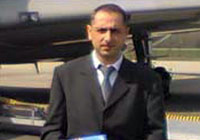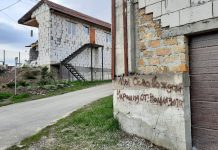Evaluation of Military Threats
Major legal documents on the national defense and security policy are:
1. National security concept of Georgia
2. Hazards assessment report of Georgia
3. National military strategy of Georgia
In 2005, the Parliament and President of Georgia approved the National Security Concept of Georgia laying down fundamental national values and interests, describing the threats, risks and challenges faced by the state, outlining the main targets of the national security policy and setting up priorities for the external, social and economic policies of the country.
The National Security Concept of Georgia specifies the threats and challenges to the state security which, on the whole, may render the country less protected. The list includes a disrupted territorial integrity, the renewal of war actions in the separatist regions, smuggling and terrorism, corruption and an inefficient system of state governance, economic and social challenges, a non-diversified energy supply, an ineffective information policy, ecological problems and Russian control over Georgian energy resources.
In September 2006, the Georgian Parliament issued a document outlining changes and amendments to the National Security Concept of Georgia, substituting its fundamental principle of defense of the territory by the principle of “total and unconditional defense.” Under these changes and amendments, the Ministry of Defense of Georgia started providing for a reserve and mobilisation system.
The Hazards Assessment Report, which was prepared in 2007, reflects the various political, economic, military and informational threats to the national security of Georgia whilst evaluating the extent of the existing threats to the state, identifying the levels of likelihood of these threats to occur and indicating their potential consequences.
The President of Georgia approved the first National Military Strategy in November 2005. This manual was prepared with a view to developing defense and combat capacities and also improving Georgia’s defense system management so that the armed forces are in a position to adequately respond to the existing threats to the country.
Because the National Security Concept and the Hazard Assessment Report failed to provide a correct evaluation of the existing threats to the country, it was impossible to accurately elaborate a national military strategy and the further development of the Georgian armed forces. A perfect example of this is the Hazard Assessment Report’s estimation of a “very low” likelihood and a “downward tendency” towards a large-scale military intervention in the period preceding the August 2008 invasion by the Russian Federation. At policy and strategy levels, therefore, the country appeared unprepared to properly defend itself and despite the 2006 declaration of the principle of total and unconditional defense under the National Security Concept of Georgia, the Government of Georgia did not — or was not able to — employ any of the components of this principle during the events of August 2008.
Notwithstanding the rapid developments in Georgia’s conflict regions and an apparent upward tendency towards threats, the Government of Georgia either did not — or could not — take adequate measures to ensure the timely and efficient transformation of a relevant military strategy. There has been a catastrophic and hitherto continuing increase in threats, risks and challenges beginning from April 2008 with the central administration showing its inability to take adequate internal and external policy measures as a means of neutralising them. The response of the Government to Russia’s increasing the number of military formations in the conflict regions — in gross violation of international law and whilst also increasing the threat of large-scale military intervention — was inadequate and unjustified. There is no doubt that providing for international actions and support was of the utmost importance but in taking the decision to confront the Russian force by means of a significantly outnumbered armed defensive action, the President placed the sovereignty and the independence of the country under direct threat. The Defense Strategy Overview underlines that a large-scale military intervention, should it happen, would have a catastrophic effect upon the vital interests of the country.
A further subject for discussion is the provision for the country’s political, economic and ecological security which, in turn, would serve to ensure the security of the state as a whole. Other chapters herein will describe these issues in greater detail.
National Defense – A Country Priority
From 2004, the development of the state defense and security systems was set amongst the top priorities of the country. These priorities have respectively found their reflection in the budget of the Ministry of Defense, showing a year-on-year growth:
In 2004 – GEL 173,9 million
In 2005 – GEL 368,9 million
In 2006 – GEL 684,9 million
In 2007 – GEL 1 494,5 million
In 2008 – GEL 1 545,2 million
Despite the privileged position of the defense and security sectors and their incoming international support and assistance, the implementation of a sound Human Resources policy and the formation of a conceptual vision remained key elements for the effective development of the Georgian armed forces.
In this respect, several errors were committed dating to 2004. Of particular note:
• The Minister of Defense’s position has been changed four times and followed by an almost complete substitution of the management unit of the Ministry’s civil office.
• The Head of the general headquarters of the Georgian army has been changed four times with each replacement having been accompanied by a change in the management of the military subdivisions.
• The National Guards’ (army reserve) commander has been replaced five times since 2005.
• The management system of various branches of defense has collapsed since 2005 (Georgian naval forces, for one example, have been led by an acting commander for the last years).
• A significant number of military servants, including qualified high rank officers, have been dismissed since 2005. In July 2008, (a month before the war), the Head of the Military Intelligence Department was dismissed together with several brigade and battalion commanders (unofficial information).
• Top level military management was often entrusted to persons with no military education or relevant professional experience.
At the initial stage of building up the Georgian armed forces, the development of a relevant military infrastructure, the improvement of social conditions and the procurement of military facilities was fixed as the main focus. The size of the troops was increased from 28,000 to 35,000, five brigades were formed and the proportion of contract military servants in the armed forces was increased. Despite a number of achievements, however, some steps fell far short of their intended aims. Of particular note:
• It was a mistake to retain a contingent of liable for military service in the armed forces (some 7,000 persons) whilst the defense budget afforded a complete transition to contract services. A good example of this has been the inappropriate use of the state’s defense expenditure which included funds spent for the training of reservists and showed that the management and allocated purpose for these expenses was not properly analysed.
• The location of numerous military units, such as the Senaki and Gori military bases and the military hospital, within the territory adjacent to conflict zones was extremely disadvantageous and led to directly increased risks for their destruction during large-scale military actions.
• The bulk procurement of weapons and defense modernisation technology, such as the purchase of light armament, armoured machinery, artillery and battle equipment, was a further serious mistake. Whilst various state documents focused upon the modernisation and development of the armed forces of the country to meet NATO standards, the Ministry of Defense procured rather large quantities of obsolete Soviet armament. Recently, however, the Ministry has begun to obtain modern military machines but these numbers remain small. Georgia ultimately appeared unable to ensure the full efficiency of its armed forces with the Georgian army lacking competent specialists capable of operating modern equipment.
Georgia’s military reserve policy and, accordingly, the actions taken thereto is a separate subject for discussion. Under the “total and unconditional defense” policy, the President of Georgia, as the Supreme Commander-in-Chief, took a decision to develop a large military reserve which has been evaluated by some experts as his unrealised PR campaign. Under this military reserve policy framework, the reserve service was made compulsory for all men from the age of 27 to 40 years (and including a special category for students) with the term of service limited to 18 days. The accent, therefore, was made upon the quantity and not the quality of the service. At the same time, serious problems persisted within the reserve management system and its Human Resources policy. The developments of August 2008 soon revealed all of the problems arising from these unsound decisions.
Civil Democratic Control of the Armed Forces and Transparency
A prerequisite for efficient armed forces in a democratic society is the civil democratic control over the various branches and a transparent policy. From 2004, the political situation in Georgia has had a serious negative impact upon the development of the armed forces within a democratic environment. It can be said that the leading political force did not carry out a parliamentary control of the armed forces but has rather become their structural component. Instead of defining a defense policy, Georgian Members of Parliament preferred to boldly interfere within military strategy, its operational and technical levels and participate in decision-making on arms procurement whilst at times even becoming involved in military management. It is our belief that debarring an oppositional quota in the “confidence group” produced a negative effect in terms of the control of the armed forces in that this one-side control principle has proved to be wholly ineffective. In such a situation, the Ministry of Defense no longer considered itself accountable to the general public and, in fact, transformed itself into a closed system which provided almost no access to information for journalists and NGOs. On the whole, all of these factors affected the provision of information on the country’s defense policy to the point that the population could not understand what was happening to their armed forces. Were we building an army in pursuit of NATO standards or were we preparing for war?
Evaluation of Military and Political Actions of August 2008
Introduction
This analysis represents an overview of the military-political, military-strategic and operational-technical actions which took place during the events of 8-27 August 2008 and an assessment of the anticipated military threats. It should be borne in mind that these estimations are incomplete due to the limited access of available relevant information.
Evaluation of Military-Political Actions
• An analysis of the events makes it clear that the Government of Georgia had no single plan in place for co-ordinated steps between state structures during the war actions.
• The geopolitical and geostrategic background conditions, which determined the opportunities of Georgia’s potential allies, its enemy and their individual roles, were not analysed. Russia’s obvious geopolitical interest in the region increased its immediate involvement in the conflict whilst Georgia’s political allies openly defined their neutral positions with regards to their immediate involvement in the conflict.
• The potential for the receipt of political, economic and international support for Georgia to successfully win the war was not analysed. Georgia’s internal economic and political capacity did not allow the country to become involved in any large-scale war actions and, moreover, for a long-term period.
• The possible political, economic, informational and psychological actions of real and potential enemies and their relevant counter-measures were not analysed. In particular: the Government of Georgia did not expect the Russian Federation to become involved into the war actions openly and within full capacity. Russia openly used its political, economic, informational and psychological potential during the war with the Government of Georgia having failed to apply any relevant counter-measures.
• The probability for the parties to win in the war, and the political outcomes, were not analysed.
• The assessment factors of the outcomes of this war by the civilised world were not analysed. As large numbers of victims from amongst the peaceful population and the flow of refugees from the conflict regions were expected, the civilised world was equally expected to condemn the settlement of conflicts by force and push the conflict regulation process with Abkhazia and the re-integration of Georgia into the international structures.
• The prospects for Georgia’s integration into the Euro-Atlantic structures after the war were not analysed.
• No clearly defined public relations policy was developed for the defense sector. The information delivered to the population by public officials was not well co-ordinated which resulted in confusion and panic within the population.
Evaluation of Military-Strategic Actions
• The military and strategy goals were not brought into compliance with the political goals. If the political goal was the restoration of the territorial integrity of the country and the strategic goals were defined correspondingly, then the potential front of the AR Abkhazia, including Upper Abkhazia, would have been defended.
• Georgia’s military allies, its immediate enemy and the military and battle potential of external military assistance were not analysed. Under the Report on the Assessment of the Defense of Georgia, a possible Russian military aggression against Georgia was incorrectly evaluated which resulted in the total collapse of the Georgian military strategic system. The Government of Georgia had not foreseen any possibilities and mechanisms of military assistance to be provided by its allies.
• The military threats and risks coming from the immediate enemy(ies) were incorrectly defined. The size of the armed forces and the technical means which might possibly be employed by the enemy to achieve its goals were not specified.
• The management system of the Georgian armed forces was disrupted at the strategic level. In a number of cases, military strategy management functions were performed by incompetent civil officers. Commanders of the united headquarters, instead of participation at strategic management levels, frequently participated in the accomplishment of operational and technical tasks.
• Strategic management control mechanisms were not functioning at the operational and technical management levels.
• Strategic capacities were not properly used. Military resources, stocks, technical means and the equipment of the Georgian armed forces were abandoned and undefended at various military bases. The functions and conditions for the employment of the military reserve were not properly defined.
• No alternative co-ordinated action plan was in place in the event of losing or retaining strategic positions. In fact, no scenarios for retreat and its accompanying measures were envisaged nor for the establishment of military barriers or the evacuation of the civilian population.
• No system or strategy for civil defense was developed which rendered the civilian population unprotected during air attacks (no civil defense facilities or plans for the use of alarm systems were prepared). Public officials had no civil defense instructions and their actions were not co-ordinated.
• The measures for the protection of the safety of the civilian population in the conflict zones and an evacuation strategy were not specified. At the initial stage of the war, the Government of Georgia did not pay attention to evacuate civilians from the conflict zone and its adjacent territories. Furthermore, no relevant evacuation infrastructure was prepared with neither the ways nor the means to safely remove the population having been developed.
• The safety and security of information was not provided for. The enemy managed to disrupt electronic information flows with, presumably, leaks of secret information.
• No mechanisms for the defence of the country’s strategic units were envisaged with military and civil strategic units having been left without protection from air, land and sea attacks. As a result, the enemy was able to destroy airports, navigation systems, coastguard facilities and military bases outside the conflict zone.
• In the case of victory, the possible risks for maintaining control over the situation were not identified. It is unclear whether or not the Government of Georgia would be able to independently maintain the peace and stability in the conflict zones in light of its military and economic capacities or if the risks of terrorism and guerrilla warfare had been envisaged. Anticipated actions and the provision of the safety of the ethnic Georgian population in the AR of Abkhazia is a further subject for discussion.
Assessment of Operational and Technical Performance
• The goals and objectives of the war and the military actions were not projected in compliance with the policy and strategy goals and objectives. The route to Abkhazia and Western Georgia as a whole was left wide open with only a minimal number of police forces having been dislocated in Upper Abkhazia.
• Military-geographic factors, such as the type of relief and the nature of communications, operational capacity, advantages and disadvantages for spreading out and the movement of troops were not properly taken account of.
• The communication means for the military subdivisions were not properly functioning. Contacts were frequently made through open cellular telephones which were unable to provide effective communication and information security and, even more so, presented a high risk that this type of communication could be easily destroyed.
• Georgian air space remained undefended from military aggression with a total of 43 air attacks having been made throughout the country.
• A potential second front in the direction of Abkhazia was not defended. The military personnel and machinery of the Senaki Brigade II were sent in the direction of South Ossetia and, as result, the enemy managed to occupy the areas outside the conflict zone of Abkhazia and all of the strategic units located therein without any resistance. This led to a serious loss of relevant infrastructure and created significant material damage to the State.
• The events were marked with a failure of logistics. During the war actions, there were reported cases of the armed forces being left without supplies of ammunition, food, fuel and primary medical aid to the extent that some armoured machinery was abandoned at the battle-front line because of a lack of fuel. The lack of deliveries of food was another serious problem as reported by some of the military servants.
• Georgia’s army reserve was used inefficiently and unreasonably. The reserve was mobilised at the wrong stage of the war actions, in a wrong manner and in the wrong numbers. Further, they were not properly dislocated in the initial states and their battle tasks were not accurately defined.
• There was a partial failure of the delivery of medical services immediately at the operational-technical level. The wounded were removed from the battle field by battle machines instead of specially equipped ambulances having differential signage in order to decrease their risk of attack which resulted in wounded soldiers often being attacked by the enemy and increasing the overall losses of the armed forces. Additionally, dozens of wounded and killed soldiers were abandoned at the battle field.
• There was a collapse of the management system of the armed forces’ human resources. The exact number of post-battle losses in the armed forces, including the identity of the wounded and those lost and killed, remained unknown.
Conclusions
It may be stated upon the basis of general analysis that:
• The Government of Georgia failed to soundly evaluate the situation created in the conflict regions and near their borders and the potential military, political, humanitarian, economic and environmental hazards.
• Despite repeated public declarations that Georgia would not respond to the Russian provocations and would continue to regulate its territorial conflicts in a peaceful way, the Government — whether voluntarily or involuntarily — found itself caught in a trap which was set by the Russians with the Georgian military authorities and military forces not properly prepared for large-scale war actions.
Irakli Sesiashvili,
\”Crisis in Georgia, 2008. Preconditions, Reality, Perspectives\”,
Independent Experts\’ Club













